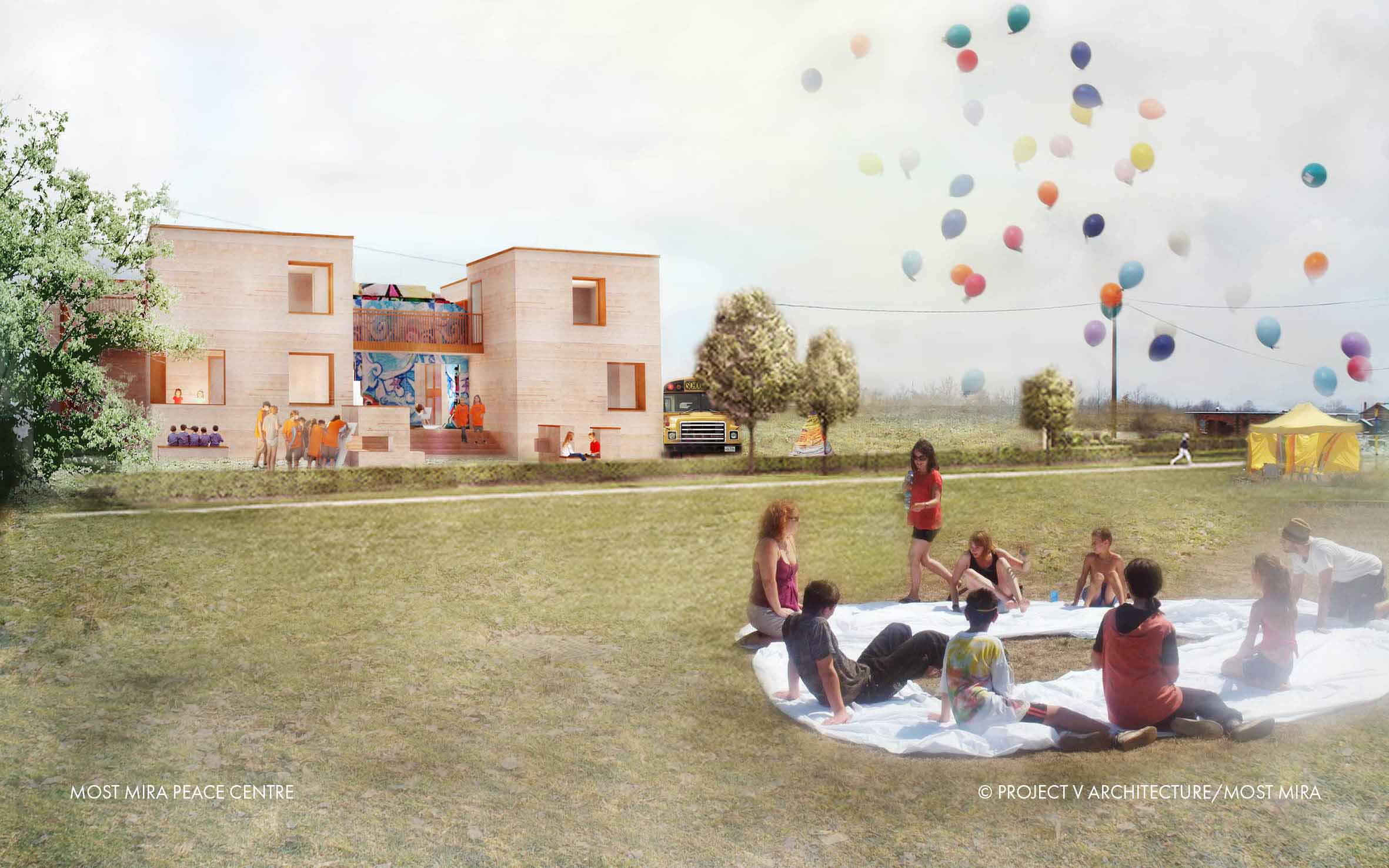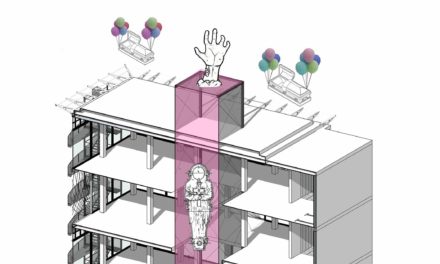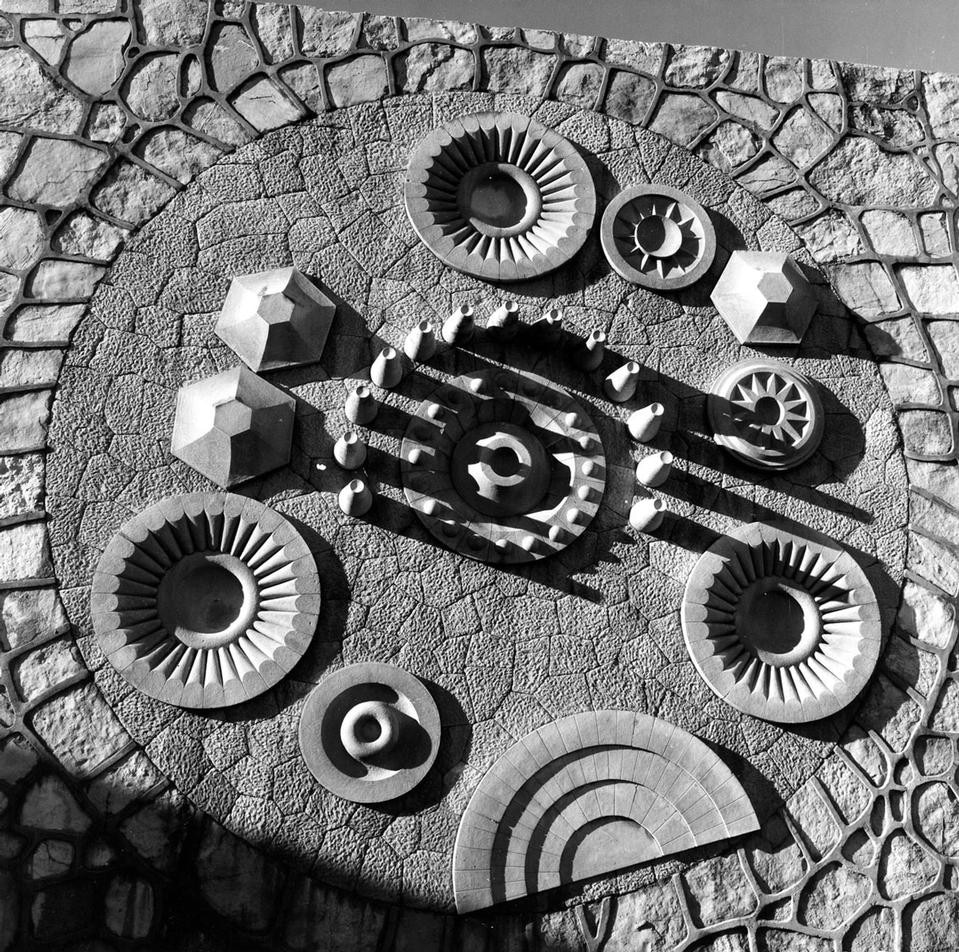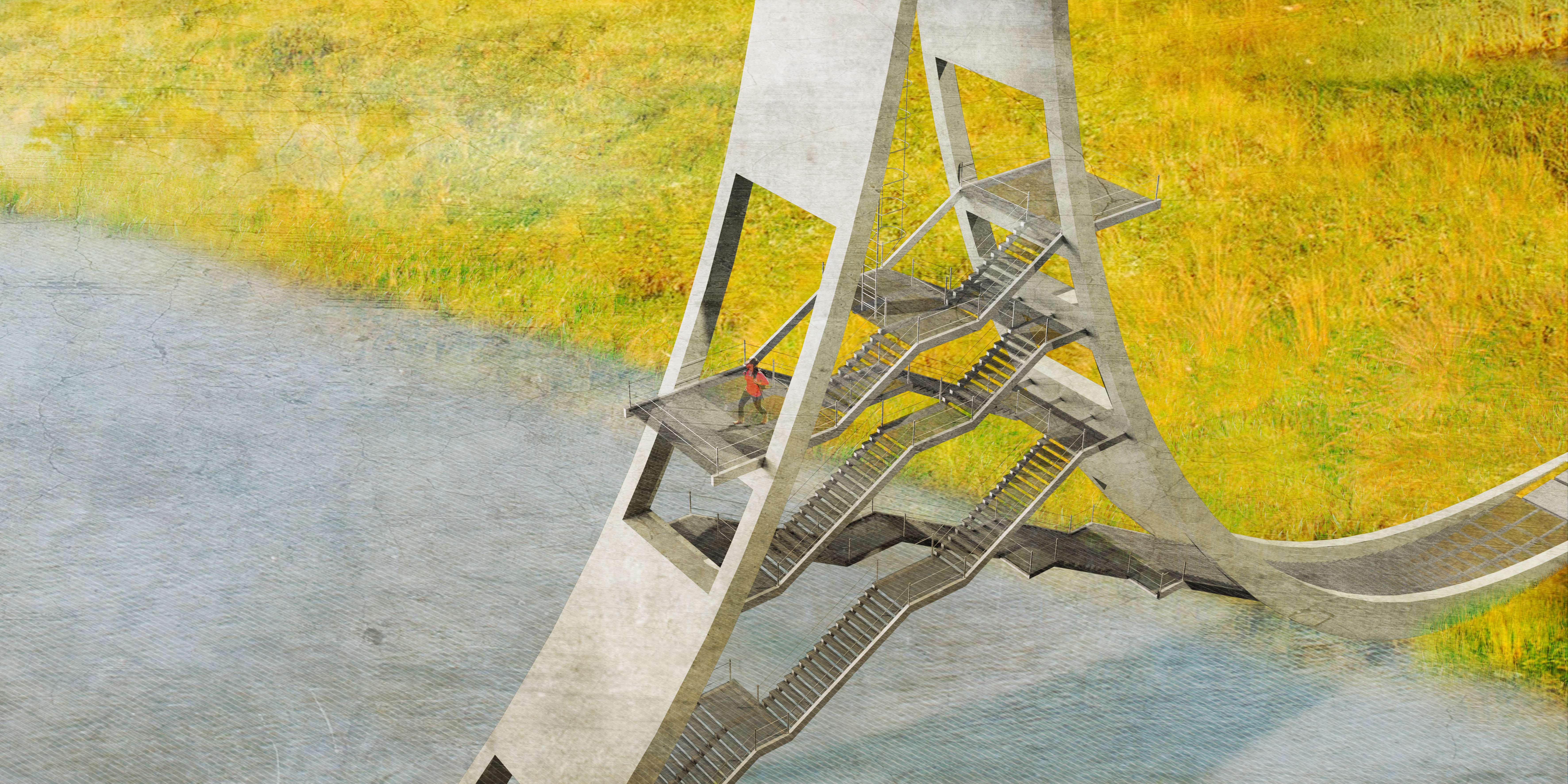The Most Mira Peace Centre is a unique project which will soon become a new home for the activities of UK and Bosnia based arts and peacebuilding charity Most Mira (“Bridge of Peace”), with construction planned to begin in Autumn 2018. Most Mira, which was founded by former Omarska concentration camp detainee Kemal Pervanic, have spent the last 9 years building peace in local communities in the war-torn region of Prijedor through organising art festivals and regular theatre programs involving local young people from ethnically divided communities, as well as volunteers from all over the world. The Most Mira Peace Centre will enable the organisation to establish a more permanent presence in the community and provide a safe space from where they can host and develop their regular activities all year round.
The architectural project was initiated in 2014 as part of a workshop organised by Most Mira, which brought together graduates from The Free Unit and The Cass with architecture students and graduates from Bosnia. Following successful workshops, Project V Architecture – run by Bosnian born UK architect Vernes Causevic – were appointed as Lead Architect and have since developed the project with Most Mira as part of a regular participatory architectural program ‘Building Democracy Through Architecture’. The project continues to bring together volunteer architecture students and graduates from the UK and Bosnia to work together collaboratively. In April 2018 the project won the prestigious Collegium Artisticum Bosnian Architecture award for best Idea.
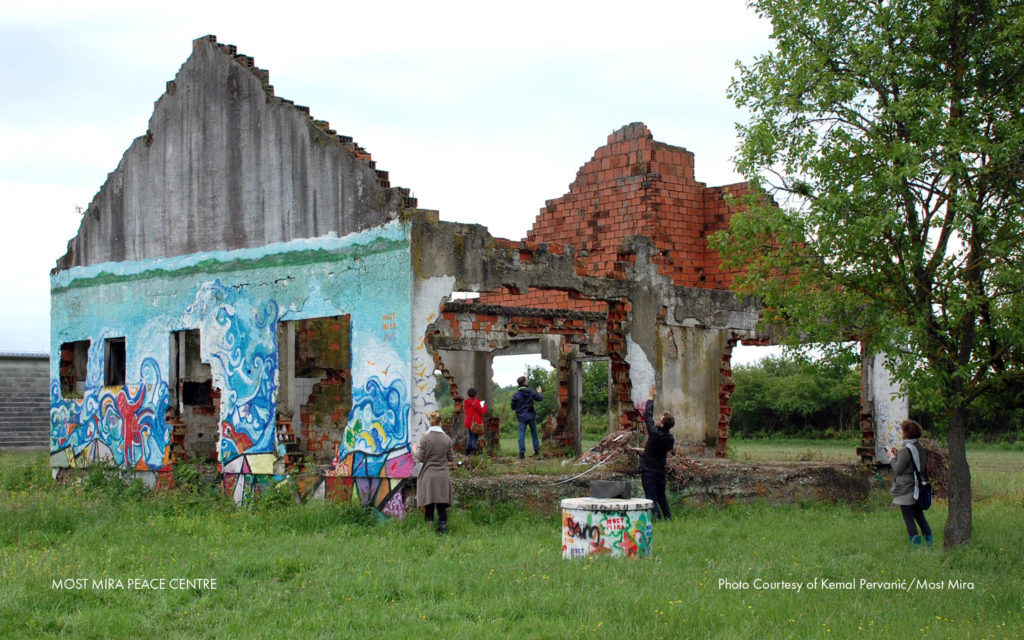
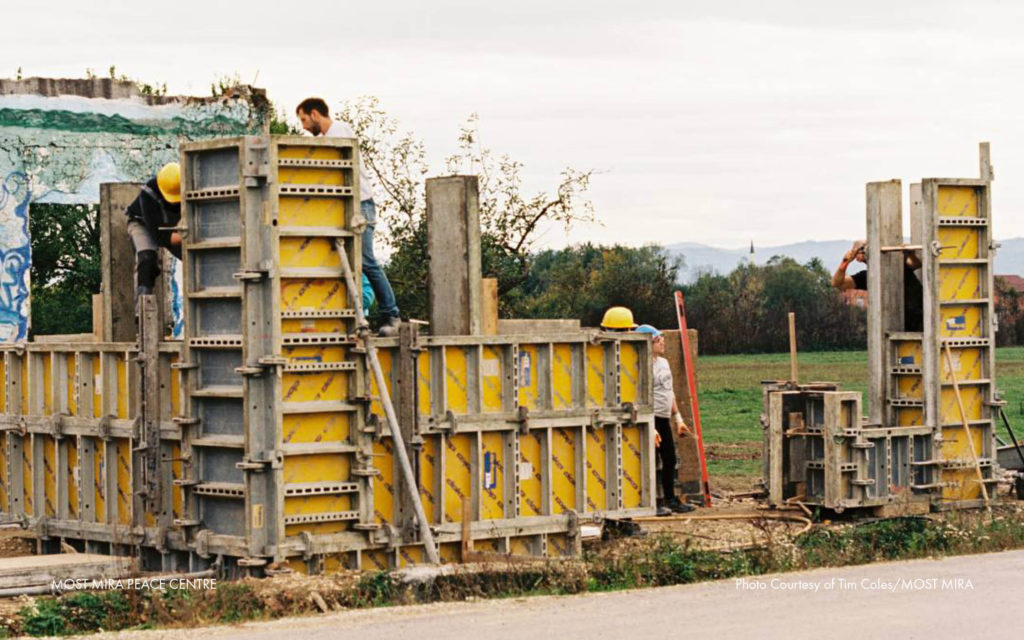
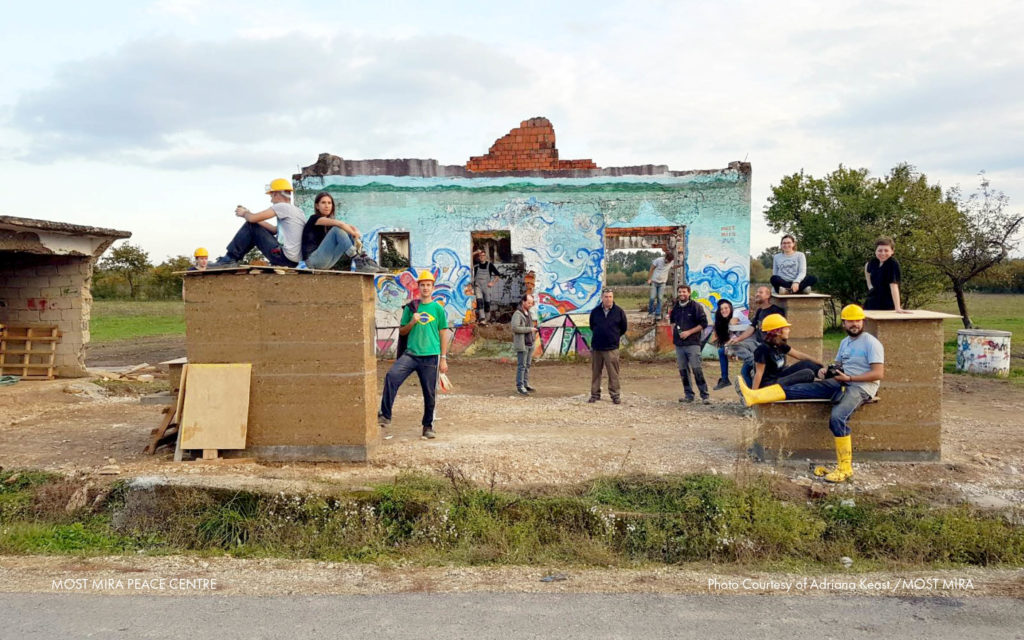
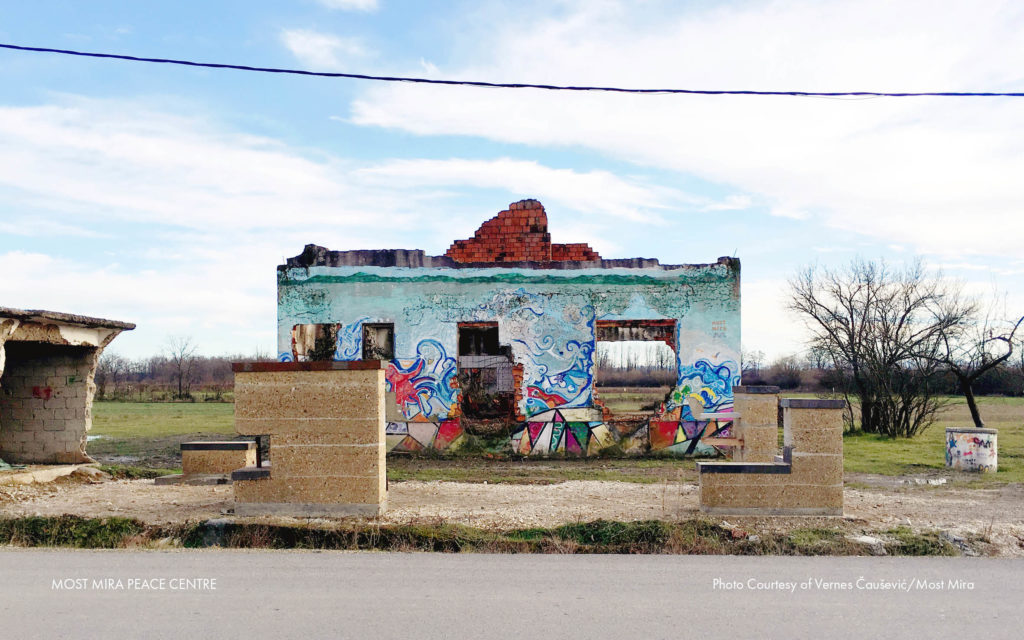
The construction of the future Peace Centre is planned in the village of Kevljani, on a site that witnessed the ethnic cleansing of Bosnian Muslims in 1992, which is situated only 10 kilometres from the former Omarska concentration camp. The site carries the memory from the recent war, while a colourful north mural on the existing facade represents more recent youth arts activities organised by Most Mira, which combined with the success of the charity’s theatre program and numerous local public consultations inspired the decision to keep parts of the ruin as a canvas for changeable stage settings.
Consultations with local residents and detailed mapping of redundant pre-war mines, factories, and natural resources revealed that earth was one of the most common traditional building materials in the Prijedor area before the war and represents an important part of the destroyed cultural and architectural heritage in the region. This led to the decision to build the structure using rammed earth and engage world renowned rammed earth expert Martin Rauch, an Honorary Professor of the UNESCO Chair of Earthen Architecture, and his Austrian based company Lehm Ton Erde, who have been collaborating on the design development since 2016.
The rammed earth structure will contain a mix of clay from Kevljani with locally available waste materials such as crushed stone, slag and gravel from local villages, quarries and mines belonging to divided communities – many of which are linked to former concentration camps and mass grave sites. The entire amount of earth material required for the building structure is available from within half an hour drive from the site.
Having received outline planning permission and currently at technical design stage, the architectural design transforms the first house that was destroyed in the village, which borders with the neighbouring Bosnian Serb village, into a vibrant public destination for the arts. Individual pavilion-like rammed earth structures group around the ruin as if engaged in a conversation, transforming the formerly private house into a public courtyard and outdoor theatre. Rooms spiral off the
central courtyard on the ground floor, including a flexible theatre, arts studio and craft workshop, while the first floor provides dormitories for visitors.
Lehm Ton Erde led a successful on-site student building residency on the site in October 2017, which involved building rammed earth wall prototypes with 12 architecture students and young architects from Bosnia and the UK. Some of the prototypes have remained on the site as the first phase of the outdoor landscaping scheme.
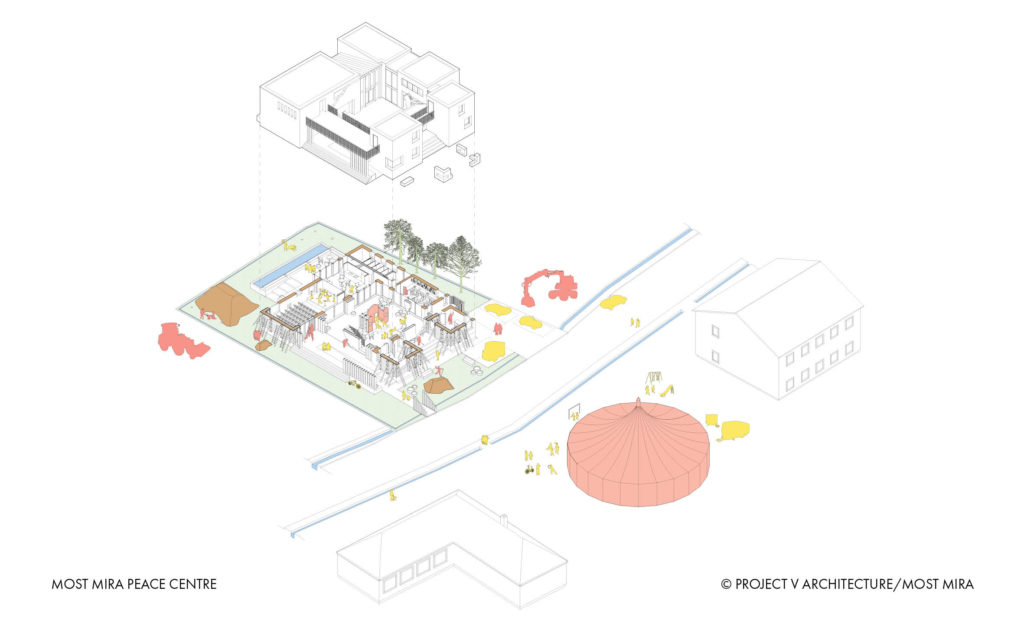
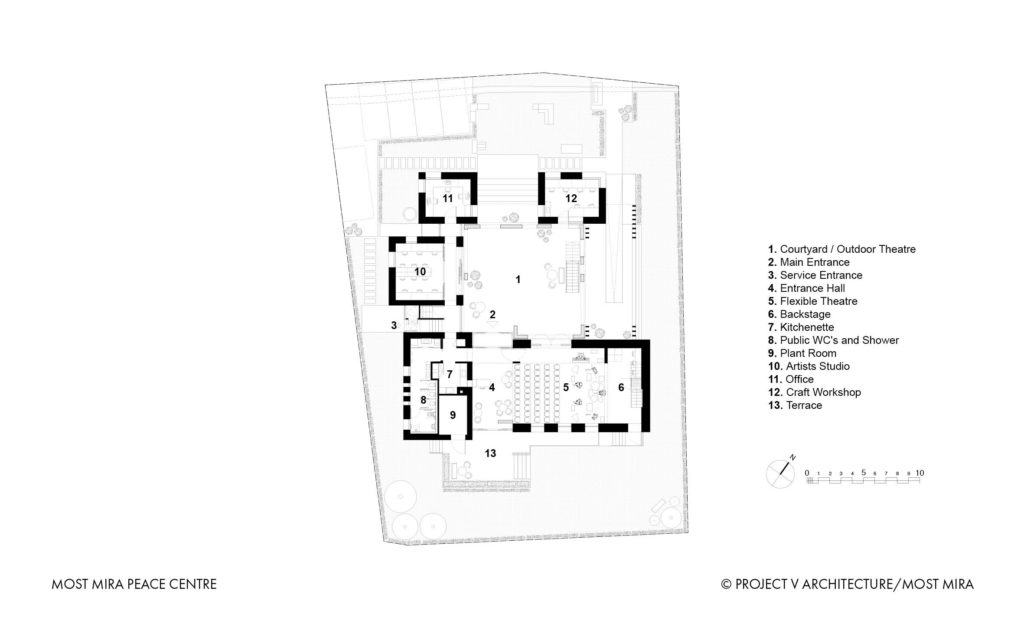
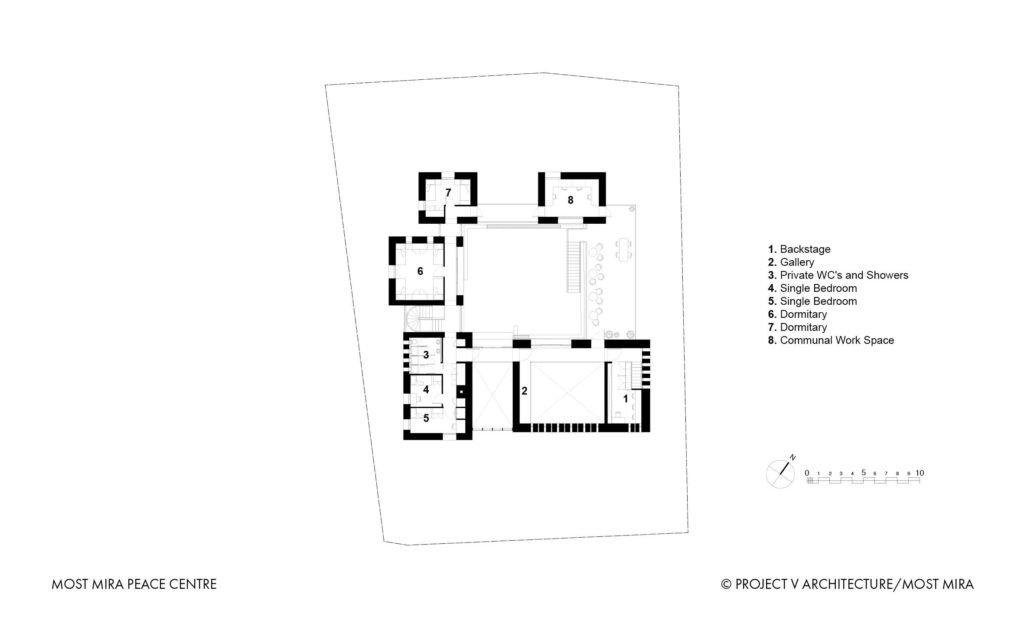
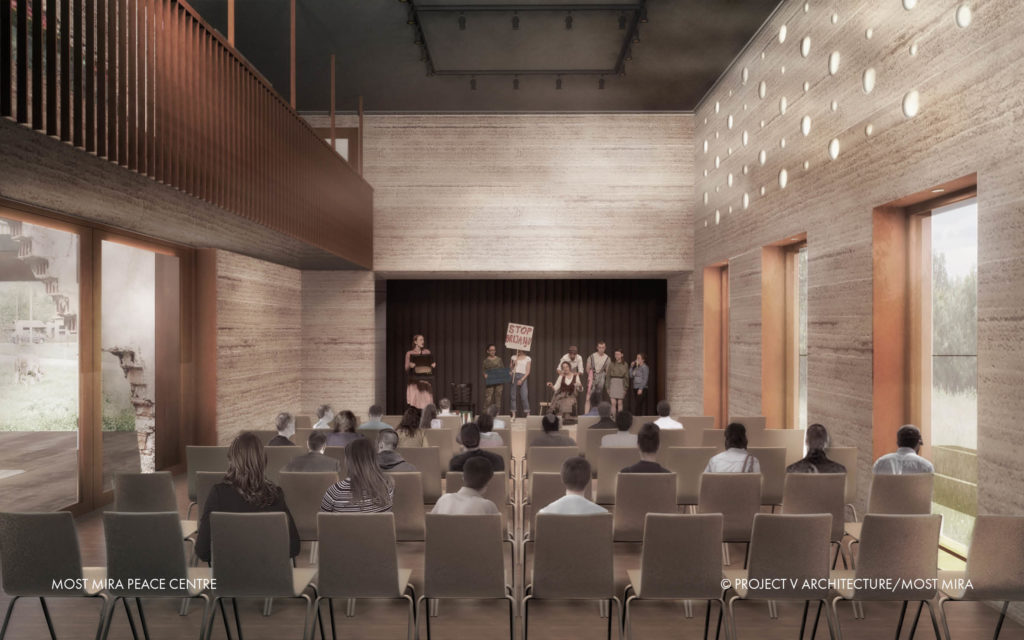
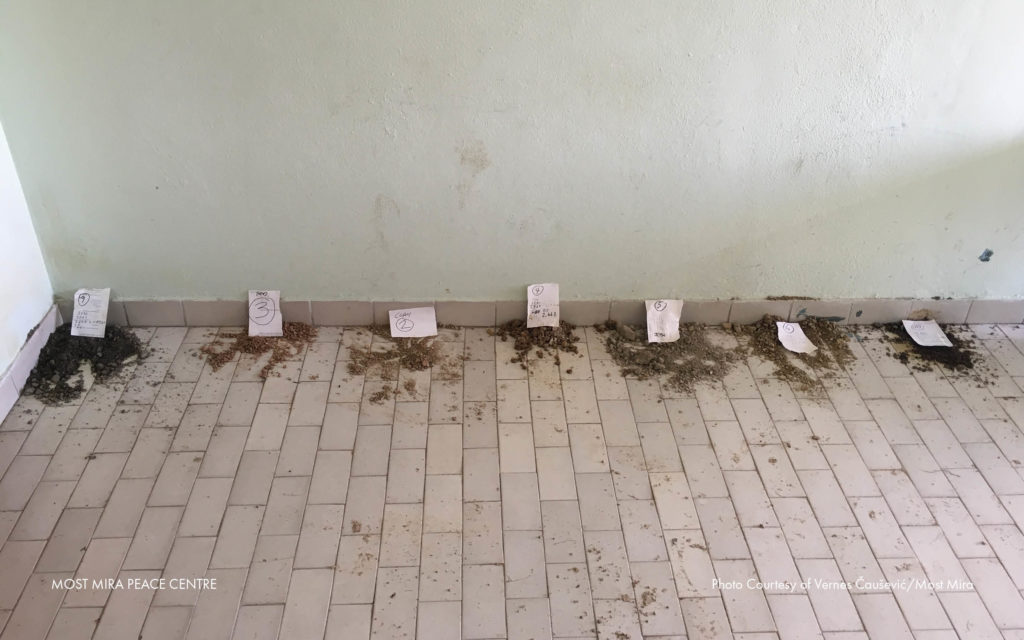
As well as re-inventing old traditional building techniques and re-skilling local builders, the process of mixing earth from divided communities is itself a symbolic and integral part of Most Mira’s peace building and reconciliation work. During public consultations and building residencies in 2016 and 2017, many positive reactions were received to building with rammed earth from the local community. Participants and visitors used these opportunities to share memories of building their family houses from earth, while other young residents joined in with the rammed earth building residency. These moments on the project have already opened up possibilities for architecture to re-connect people from divided communities.
The participatory architectural process is conceived as an integral part of Most Mira’s peace building work as workshops always involve students and young architects from politically divided parts of Bosnia, and public consultations that are embedded in the local community. The project is extremely pertinent to current discourses in architecture through it’s use of a participatory design process and community engagement, re-skilling local labour, using local sustainable materials,
addressing the rural context and considering how architects can play a positive role in peace building in post-conflict areas through their work.
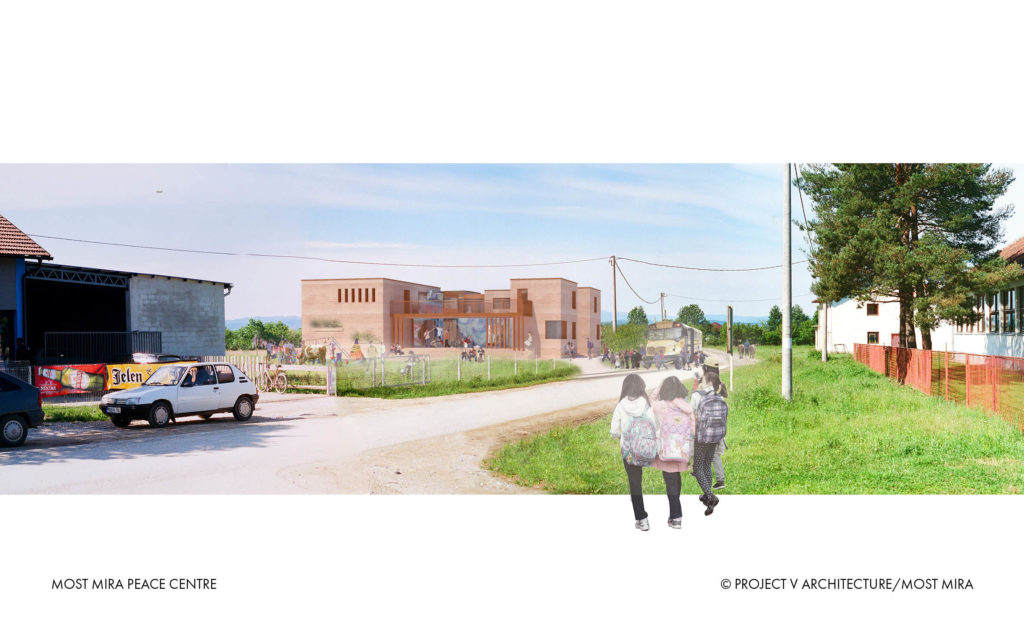
About Project V Architecture
projectvarchitceture is an award winning architecture practice, founded by Vernes Causevic and Lucy Dinnen, working internationally with offices in Sarajevo (Bosnia and Herzegovina) and London. projectvarchitecture have been developing a research and process driven approach to architecture that actively engages with the specific contexts of each project and promotes community participation. www.projectv-arch.com
About Most Mira
Most Mira (“Bridge of Peace) is a registered charity in the UK and Bosnia Herzegovina bringing together children and young people to learn new skills, make friends across ethnicities, and celebrate diversity in the Prijedor area of northern Bosnia and Herzegovina. This is achieved through youth arts festivals, theatre workshops, peace building visits and tours and architectural workshops. Our aim is to grow and diversify our range of creative and inclusive activities for youth and establish a permanent hub in Kevljani village near Prijedor.

